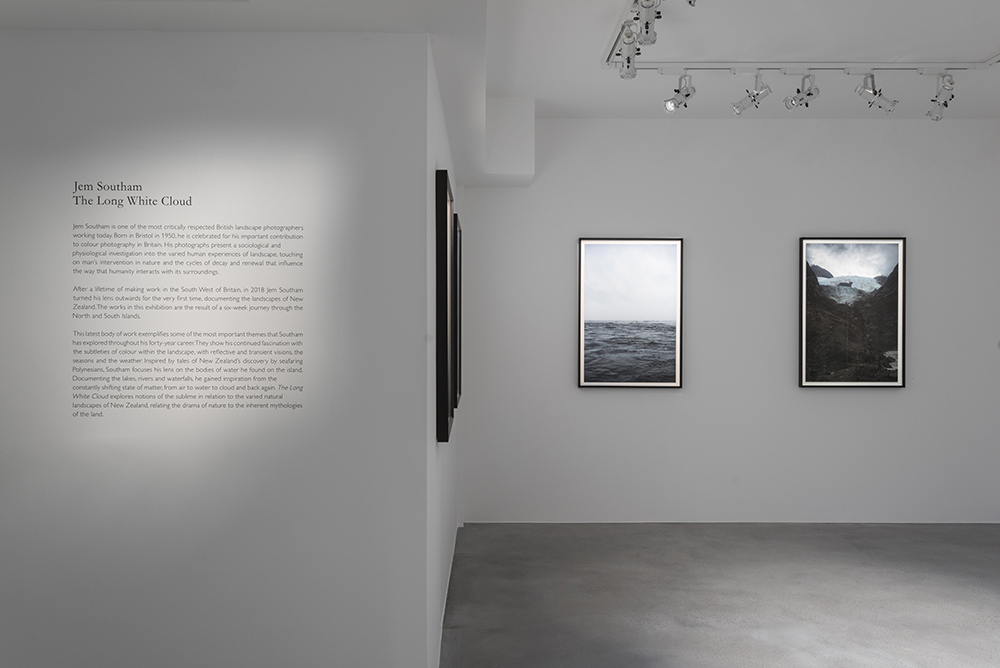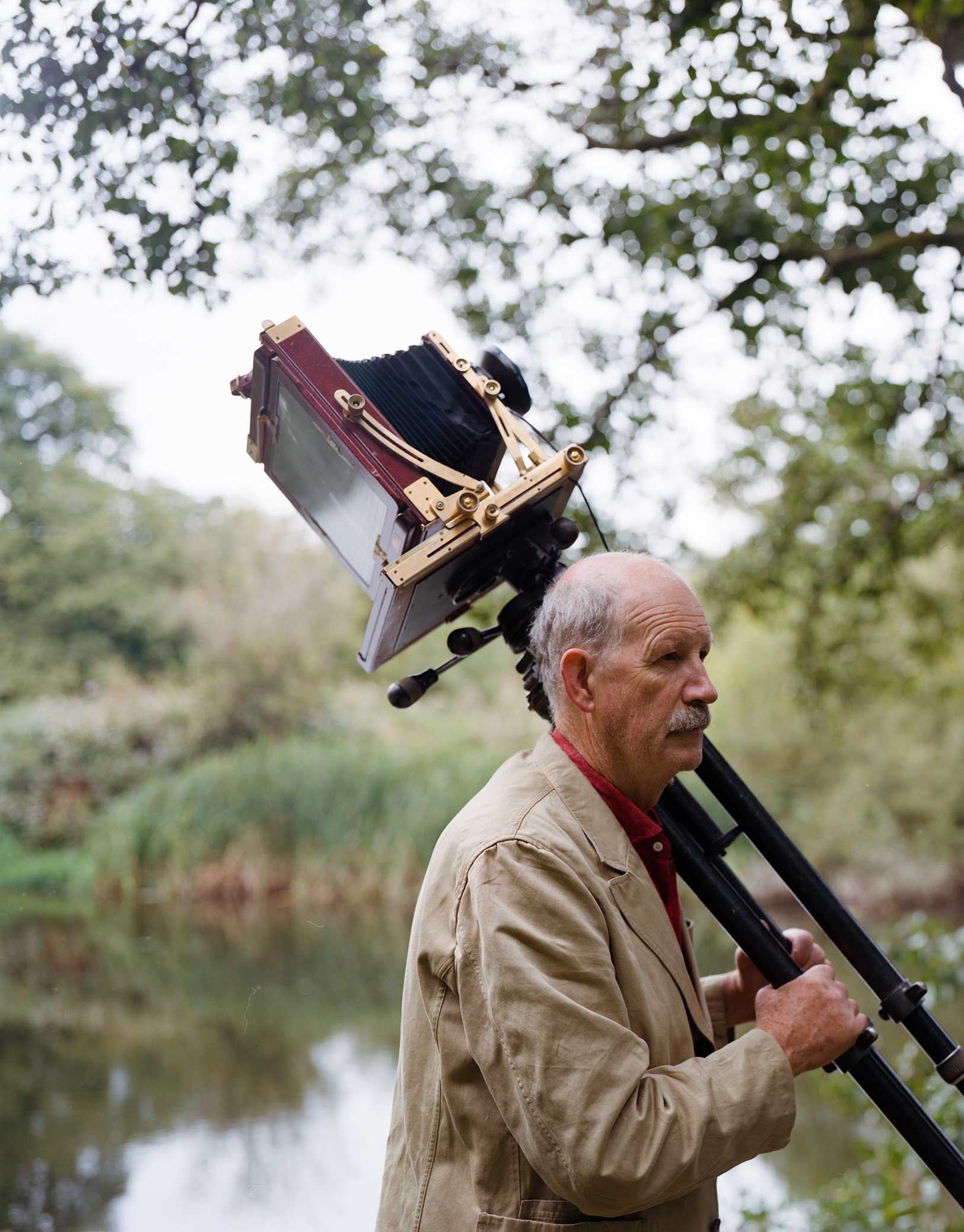Sustaining the fascination with the medium for forty years, in a coherent manner and managing to keep exploring how to fashion new bodies of work.
GHP What time do you wake up?
JS Today at 5am. During the Winter I make at least 40 dawn visits to one short stretch of the River Exe a few miles from home. Arriving an hour or so before sunrise, I stand and observe and photograph as the light gradually builds. As its now early Spring the dawn chorus is a spectacular feature of the walk to the river.
GHP What do you eat for breakfast?
JS Some years ago I spent a week in Madrid for an exhibition at PhotoEspaña. Missing the cooked breakfasts I grab in British or American hotels, I started the days with a bowl of mixed fruit, enjoyed it and came home intending to continue. The family were highly sceptical that the fad would last more than a week, but its been four or five years now and every day I start with a large bowl of assorted fruits, there has always to some banana, topped off with yoghurt, two cups of coffee, and a piece of toast follow.
GHP Describe where you produce your work, and why you chose that space?
JS When I was first interested in photography I improvised a darkroom in our roof at home till I left for college.
Since then I have shared communal darkrooms, at the LCP, in galleries and at the university. However, a few years ago when I began to work digitally, I finally established a space to work of my own, a digital darkroom in a room at the top of our house. It has taken years to get it working to a satisfactory level, and it’s still not working quite right, but I really enjoy spending time up there. I am slowly learning how to manage time on my own. Having spent 45 years working in communal contexts it’s been a surprise how hard it is to get by without social contact. I am surrounded by boxes and boxes of negatives, loads of books and a pile of CD’s, with a view out across the north of the city to trees. It is compact but its serves. My wife, who is a ceramic sculptor, has two studios – one in the house and one at the bottom of our garden. Now I have retired from teaching, we meet at mealtimes to discuss the days progress. It is a profoundly wonderful arrangement.
GHP Do you have a particular daily routine that helps you work?
JS I don’t. Each day is a different mix of studio, kitchen, sofa, allotment, the street and garden.
GHP Where do you go for your creative sparks?
JS Many years ago I was fortunate enough to get to know [the artist] Keith Arnatt a little. He was teaching at Newport at the time and when he retired I noticed that he had a huge burst of extraordinary creativity – a result I surmised of decades of artistic suppression due to his teaching commitments. I wondered if I would be so fortunate and indeed it feels so. I feel at the moment that the sparks are flying! It may be that the world thinks little of the results, but I really don’t care, as I have never had such a rich flow of ideas, thoughts, and work. But also by working, going out into the world and watching and waiting to see what comes of it.

Sotteville-sur-Mer, February 2006
GHP What are you currently working on?
JS I am right at the end of the fifth winter’s work along the stretch of the River Exe near my home. I have been photographing the same space, about 200 yards of riverbank, for those five winters and I make a new piece of work each year. As I begin each year a fresh conceptual framework somehow arises from the working process. Each year when the winter is over I think that’s enough for this site, surely I have exhausted it, but I get pulled back once a new winter begins and a new idea emerges. I have piles and piles of work prints and must now begin to organise them into five coherent studies.
Since publishing The Moth with MACK, I have found myself revisiting The Red River work and am fascinated in exploring further where the two works came from. I also have one more road trip to make in New Zealand. Three so far undertaken – during their Autumn, their Spring and their Summer. I was planning to go again in August and September of this year…There is also a desire to finally resolve the Rockfalls pictures into a book and possible exhibition. They began in 1994 and I think its time to draw a line – so a few more trips were planned to Haute Normandie, but again they will have to wait now.
GHP What do you do when you need to reset your mind?
JS Walking always sets off trains of thought. Much happens when I am sleeping. The hour of silence at a Quaker Meeting is a remarkably effective stimulant for new paths of thought. I read very eclectically and much comes from that. Listening to music. Working with a new piece of technology provokes a change in one’s practice which is always disturbing at first but eventually fruitful. When at art college, sharing ideas with colleagues and students. Listening – to others, to the world, to ones own mind.
GHP Who was your most important mentor or inspiration?
JS I have never really had a mentor a such. My maternal grandfather, Harry Cottrell, has always been a guiding example and influence in my life. My father read widely with an intense curiosity, and he had one overwhelming passion – birds and ornithology. My mother loved plants, growing and a garden. Many of the various works I have been engaged with over the past ten years have involved birds and plants.
GHP Who do you speak to when you need a second opinion or who gives the best feedback?
JS Jenny, my wife, is my best critic, and I hope I hers. She seems to have a more profound understanding of whatever it is that emerges from me through my work than anyone else. I tend not to share my work when it is being made, preferring to nuture it privately. When I reach a point when I think I have a clear idea of the work’s content, form and structure, I try to think of an individual who might help me realise the piece out in the world – a curator or publisher. Once found, we then share the final stages of gestation. David Chandler and Michael Mack have both helped guide me through resolving and releasing my work over the past ten to fifteen years.
GHP What’s the best advice you have ever been given?
JS I do have one photographer friend with whom I share my thoughts. Peter Fraser and I met at the V&A over 35 years ago when hoping to hear William Eggleston (he didn’t show up so we said hello). We talk frequently, and have been sharing our pains and triumphs, such as they are, ever since. Peter’s advice – to believe in oneself, to never give up, to keep critical, to keep stretching, to allow the passion and fascination for the medium to guide one, to blithely ignore trends or fashions and to stay chirpy – has always helped maintain my equanimity.

Jem Southam, The Long White Cloud, 2019
GHP If you weren’t an artist what would you do?
JS Well I taught for 35 years, and before that ran a gallery and worked in one too. My fantasy though is to run my own publishing house, in an ideal world with David Chandler and a loose group of advisers made up of some of the brilliant folk I have met through the years.
GHP How do you switch off from work in the evening?
JS I rarely switch off completely, sometimes I feel ashamed that I am not listening to those around me when I should be, because my mind is off turning over some thread of thought related to what I am working on at the moment.
GHP What book are you reading right now?
JS There are books dotted in rooms all over the house which I am pick up and carry on with. Often I am involved with half a dozen or so books. A bit crazy perhaps. At the moment on the sofa I have – Birds in the Bronze Age, A North European Perspective by a Swede called Joakim Goldhahn. It is an academic book which describes and analyses the iconography of birds and the distribution of bird artefacts in graves and rock art from an area that covers the south of Sweden and Norway, Denmark and into the north of Germany. The prevalence of swans within the mythological worldings of the region and the age is what is of most interest as it relates to my Winter river pictures. On top of the pile next to the bed is – Now We Shall Be Entirely Free a novel by Andrew Miller. In the studio is – The Seafarer: A Journey Among Birds by Stephen Rutt. For the past three years I have been visiting and photographing at sites around Britain where seabirds nest. They are the most wonderful creatures and are unique in a remarkable way. As far as one knows they are the only animals on earth that can walk on the ground, fly in the sky, swim on the surface and dive down into the waters of the oceans.
GHP Who is the other artist working today that you most admire?
JS So many, but those I really relate to are the students who I have worked closely with. Over the past ten years I have been involved with a batch of doctoral students and a larger number of MA students. As a tutor and supervisor, one gets involved in their work in ways that are so rich and revealing. For me their work is the most rewarding. A few to mention recently– Luca Nostri, John Spinks, Martin Coles, Fedra Dekeyser. Colleagues too, and if there was one artist I would like to acquire a picture by right now it is the painter Chis Cook.
GHP If you could have lunch with any artist from across time, who would it be and why?
JS Henry Fox Talbot – who has to be one of the geniuses of the medium. Or Paul Strand perhaps, and Harry Callahan seemed a nice fellow
GHP What are you most proud of in your career?
JS Keeping going. Sustaining the fascination with the medium for forty years, in a coherent manner and managing to keep exploring how to fashion new bodies of work. And helping others do the same, teaching in an art college and then, but less so, a university, was such a joy and a privilege
